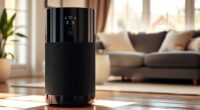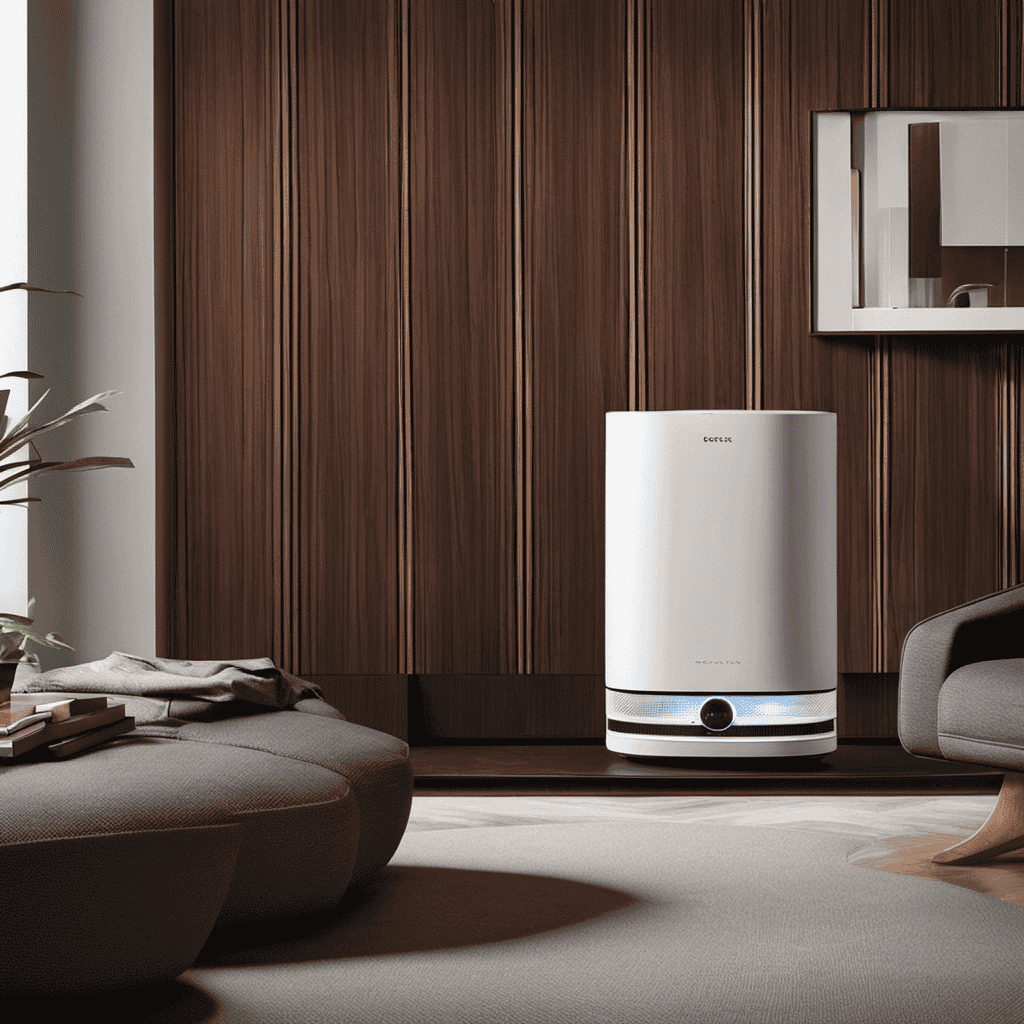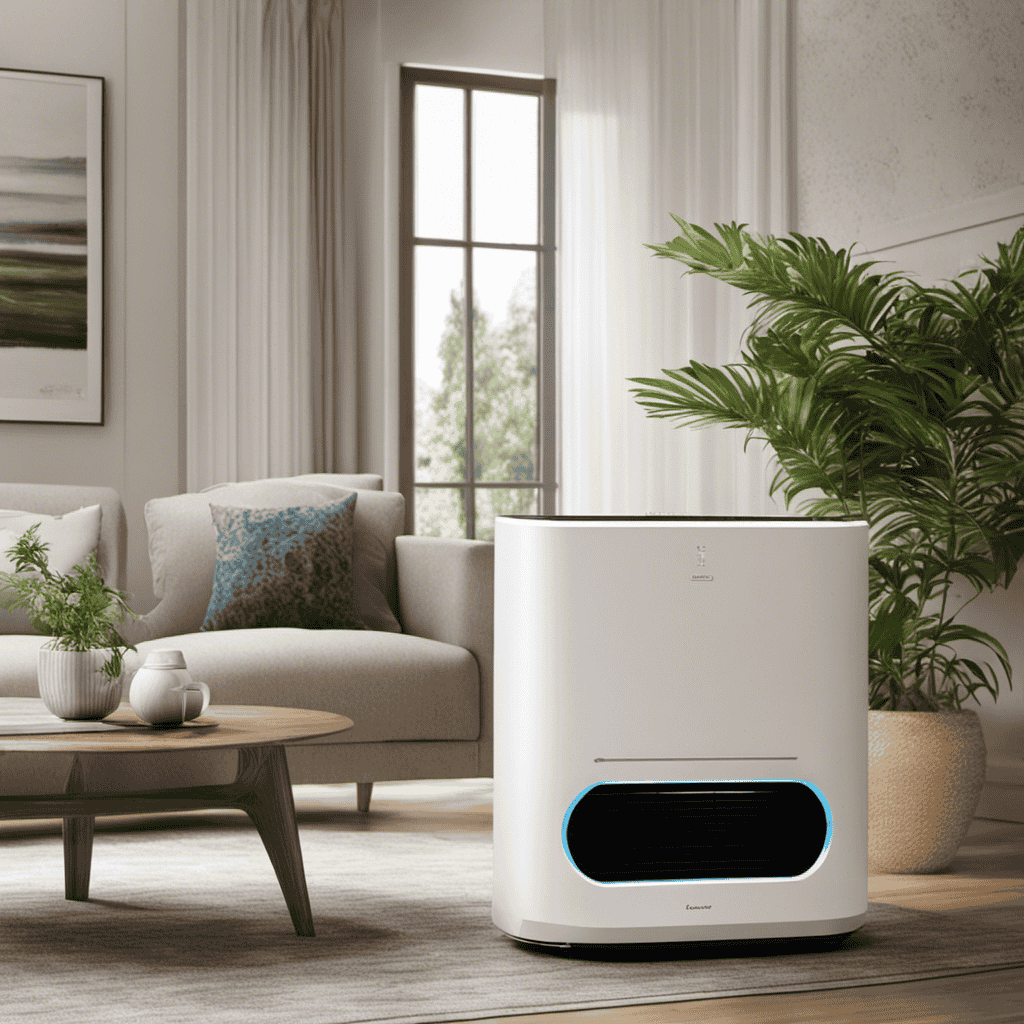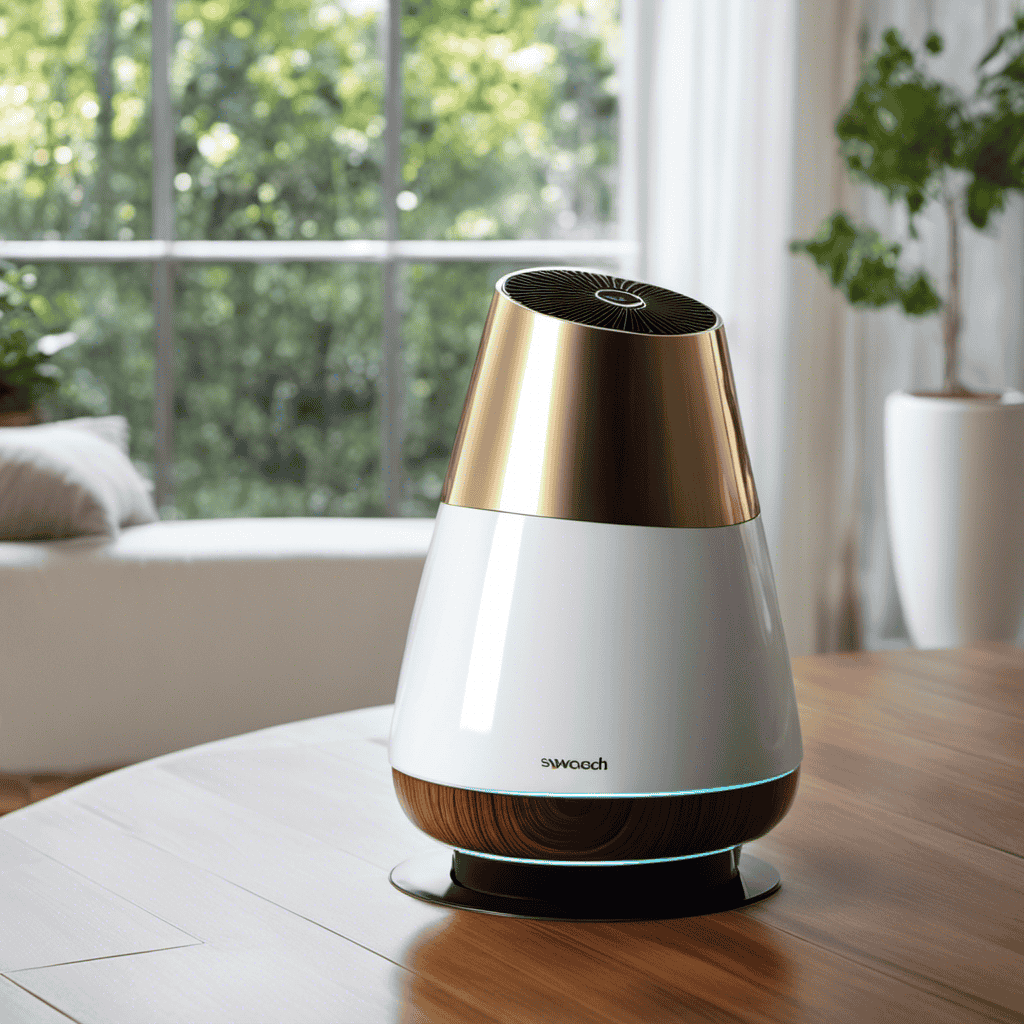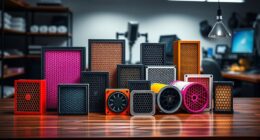Ozone-free ionizers are a safer choice for air purification because they remove particles and pollutants without producing ozone, which can harm your lungs and worsen asthma. They use advanced technology to attract dust, pollen, and odors while avoiding health risks associated with traditional ozone-generating models. If you want a cleaner, safer indoor environment without ozone concerns, exploring how these systems work and their benefits can help you make an informed decision.
Key Takeaways
- Ozone-free ionizers eliminate ozone-related health risks, making them safer for sensitive individuals and households.
- Properly designed ozone-free models effectively remove pollutants without producing harmful ozone as a byproduct.
- Some marketing claims may overstate benefits; it’s important to verify if the device truly operates ozone-free.
- Combining ionization with additional filters like HEPA enhances air purification safely and effectively.
- Not all ozone-free ionizers are equally effective; research and certification ensure genuine safety and performance.
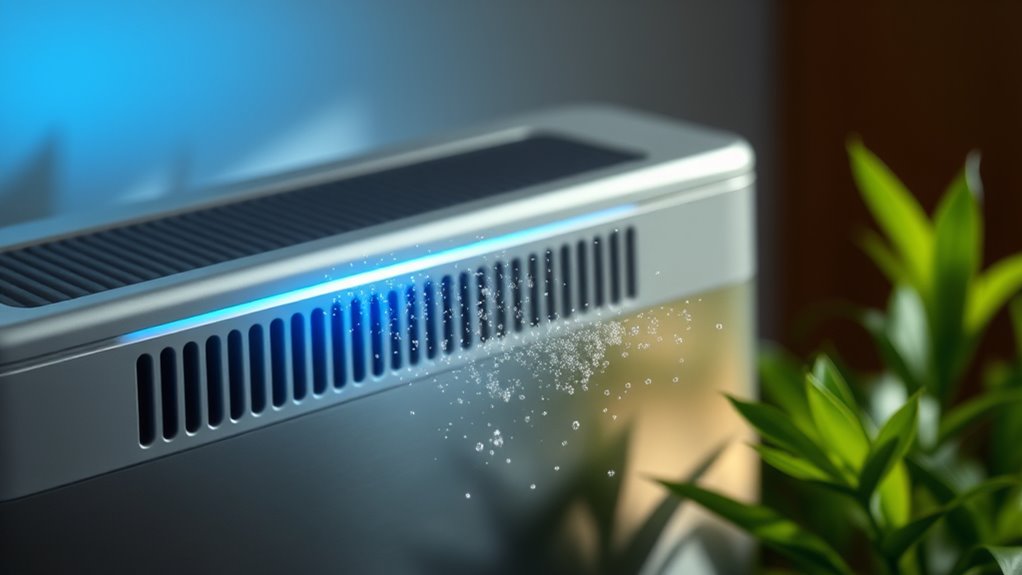
Ozone-free ionizers are air purification devices designed to remove pollutants without producing ozone, which can be harmful to your health. Unlike traditional ionizers that generate ozone as a byproduct, these models focus on delivering clean air without risking the potential respiratory issues associated with ozone exposure. When you choose an ozone-free ionizer, you’re prioritizing health safety and ensuring that the air you breathe remains free of harmful chemicals and particles. This makes them particularly suitable for households with children, allergy sufferers, or anyone concerned about maintaining a safe indoor environment.
Ozone-free ionizers clean the air safely without harmful ozone emissions, ideal for allergy sufferers and families.
The core advantage of ozone-free ionizers lies in their ability to clean the air effectively while minimizing health risks. Ozone, while useful in certain industrial applications, can irritate your lungs, worsen asthma symptoms, and even damage your respiratory system over time. By avoiding ozone production, these devices provide peace of mind that your air purification efforts won’t inadvertently introduce new health hazards. Instead, they use advanced ionization technology to attract and neutralize airborne pollutants such as dust, pet dander, pollen, and smoke particles. As these particles gain a charge, they stick to surfaces or are captured by filters, resulting in cleaner, fresher indoor air.
You might wonder if ozone-free ionizers are as effective as traditional models. The answer is yes, especially when designed properly. Many ozone-free units incorporate additional filtration methods, like HEPA or activated carbon filters, to enhance their ability to remove a broad spectrum of contaminants. This combination ensures that the air you breathe is not only free of particles but also free of odors, chemicals, and volatile organic compounds (VOCs). These features underscore a commitment to health safety, making ozone-free ionizers a reliable choice for improving overall indoor air quality.
Choosing an ozone-free ionizer demonstrates an active effort to protect your health while maintaining a clean environment. It’s a smart move if you’re concerned about the long-term effects of ozone exposure or simply want to breathe easier. This technology allows you to enjoy the benefits of air purification without the worry of unintended health consequences. As more people become aware of indoor air quality issues, ozone-free ionizers stand out as a safe, effective solution that aligns with your goal of creating a healthier living space. Incorporating air quality awareness as part of your personal development journey can further enhance your overall well-being. By investing in one, you’re taking a proactive step toward safer, cleaner air that promotes overall well-being.
Frequently Asked Questions
Do Ozone-Free Ionizers Effectively Remove All Airborne Pollutants?
Ozone-free ionizers can improve air quality, but they don’t remove all airborne pollutants. They help by reducing particles and neutralizing some odors, yet indoor humidity and air circulation also impact air cleanliness. To maximize effectiveness, you should manage indoor humidity levels and guarantee good air circulation. While ionizers are useful, combining them with other air purification methods offers a more thorough approach to cleaner, healthier indoor air.
Are Ozone-Free Ionizers Suitable for Allergy Sufferers?
Ozone-free ionizers can be suitable for allergy sufferers if they incorporate HEPA filtration, which effectively reduces allergens like pollen, dust, and pet dander. While ionizers help neutralize airborne particles, pairing them with HEPA filters ensures better allergen reduction. You should look for units that combine both technologies for maximum relief, especially if you’re sensitive to airborne irritants. Always check product specs to ensure it meets your allergy needs.
How Do Ozone-Free Ionizers Compare to Traditional Air Purifiers?
You might think traditional air purifiers are your safest bet, but ozone-free ionizers offer a different approach. Unlike electrostatic filtration, which traps particles on filters, air ionization releases charged particles that attract pollutants. Ozone-free models remove ozone concerns, but some argue they’re less effective at clearing allergens. While both have merits, your choice depends on balancing safety and efficiency in your environment.
Can Ozone-Free Ionizers Produce Any Harmful Byproducts?
You might wonder if ozone-free ionizers produce harmful byproducts. Generally, they are designed to prevent ozone emission, making them safer for indoor air quality. However, some models may still generate trace amounts of other byproducts, like nitrogen oxides or particles, which could impact byproduct safety. Always check product specifications and certifications to confirm the ionizer minimizes ozone emission and maintains high byproduct safety, protecting your health.
What Maintenance Is Required for Ozone-Free Ionizers?
Like a well-tuned orchestra, your ozone-free ionizer needs proper maintenance. You should regularly replace filters to keep air purity high and prevent buildup. Additionally, system calibration ensures peak performance, avoiding inefficiencies or malfunctions. By staying on top of these tasks, you ensure your device operates smoothly, providing clean air without harmful byproducts. Consistent maintenance is your key to safe, effective air purification.
Conclusion
As you breathe in the crisp, fresh air from ozone-free ionizers, you might feel like you’re standing in a cool, spring breeze, free from worry. These devices promise a safe sparkle, but remember, not all that glitters is pure. Stay informed, weigh the facts, and trust your senses. With a little awareness, you can enjoy the gentle glow of cleaner air, knowing you’re making smart choices for your home’s environment and your health.

